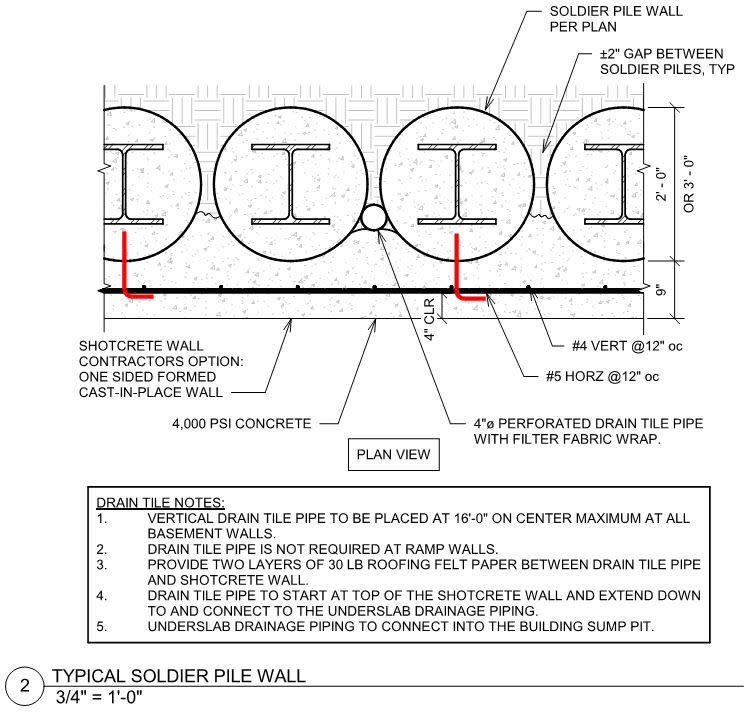bf343
Structural
- Sep 6, 2013
- 13
I have a project where we are placing a precast concrete building with a basement directly next to an existing building. The basement excavation depth is 18 feet. The owner and contractor want to look at using auger-cast soldier piles with a shot-crete wall for the basement excavation shoring and load bearing element. My design assumes all the new building loads are resisted by the soldier piles. I have also assumed the entire excavation shoring is resisted by the soldier piles. Therefore, structurally, it seems the shot-crete wall is not a structural element, but is only the interior "cladding" (probably not the correct term, but you get the idea). However, it is still an element of the building I am specifying. My issue is that I am not very familiar with shot-crete and am not exactly sure how to detail it.
- How does the shot-crete wall "pin" or "tie" to the soldier piles? Epoxied #4 hooked bars at x" on center? What is the force used to design these tie elements? Or do I solely rely on the bond of the shot-crete to "stick" the shot-crete wall to the soldier piles?
- My basement is fairly long (+/- 300 feet) so does the shot-crete wall need construction joints in it? If so, do I need to detail stopping some of the reinforcing at the joints?
I have tried to push as much of the shot-crete specifications onto the shot-crete contractor (unknown at this time) as I feel comfortable doing, but some of this seems like it is in my court as the EOR.
I appreciate any input and shared experience you all can give.
Thanks
- How does the shot-crete wall "pin" or "tie" to the soldier piles? Epoxied #4 hooked bars at x" on center? What is the force used to design these tie elements? Or do I solely rely on the bond of the shot-crete to "stick" the shot-crete wall to the soldier piles?
- My basement is fairly long (+/- 300 feet) so does the shot-crete wall need construction joints in it? If so, do I need to detail stopping some of the reinforcing at the joints?
I have tried to push as much of the shot-crete specifications onto the shot-crete contractor (unknown at this time) as I feel comfortable doing, but some of this seems like it is in my court as the EOR.
I appreciate any input and shared experience you all can give.
Thanks



